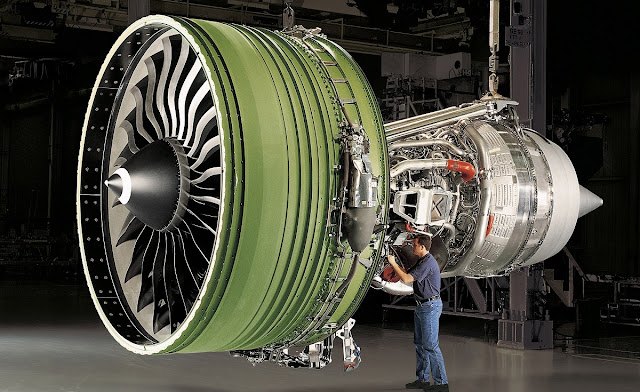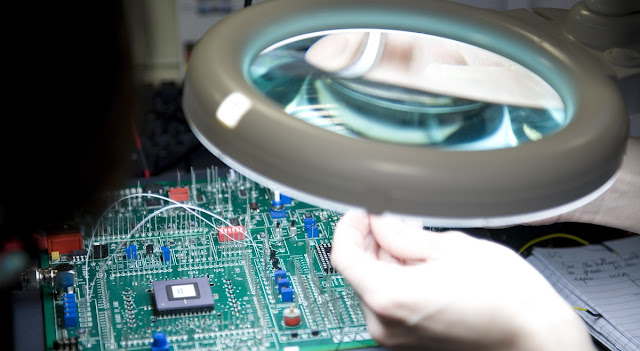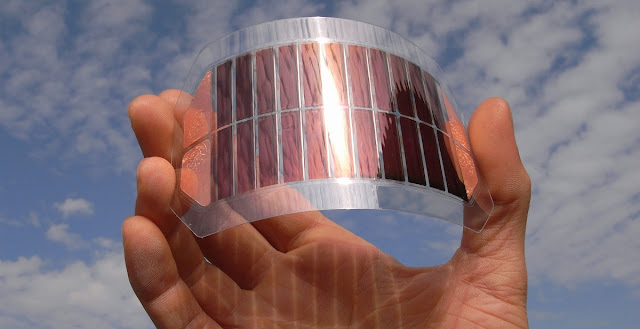Impact of Nanotechnology in our life
April 13, 2018
The ability to see nano-sized materials has opened up a world of possibilities in a variety of industries and scientific endeavors. Because nanotechnology is essentially a set of techniques that allow manipulation of properties at a very small scale, it can have many applications.
What is Nanotechnology?
Nanotechnology is the design, production, and application of structures, devices, and systems by controlled manipulation of size and shape at the nanometer scale. Nanotechnology is defined as the study and use of structures between 1 nanometer and 100 nanometers in size. One nanometer is a billionth of a meter, or 10-9 of a meter. For comparison, a sheet of newspaper is about 100,000 nanometers thick; it would take eight hundred 100 nanometer particles side by side to match the width of a human hair. Nanotechnology is helping to considerably improve, even revolutionize, many technology and industry sectors: information technology, homeland security, medicine, transportation, energy, food safety, and environmental science, and among many others.
Benefits of Nanotechnology
Manufacturing:
Various manufacturers are using nanotechnology to make products with improved capabilities or to reduce their manufacturing cost. With nanotechnology, individual atoms and molecules can be manipulated and rearranged to create useful materials, devices, and systems. With this manipulation, products can be made with fewer imperfections and more durability, and energy sources can be cleaner and more cost-effective.
Nanocomposites are used in Producing batteries with greater power output, speeding up the healing process for broken bones, Producing structural components with a high strength-to-weight ratio, lightweight sensors. Nanostructured Tungsten-carbide-cobalt composite powder is used to make a sintered alloy as hard as a diamond for cutting tools, drill bits, jet engine parts. Nanoclay is used to thicken the lubricating oils to produce especially high temperature resistant lubricating greases with good working stability and water resistance. Nanoclays are also used as rheological modifiers in paints, inks, grease and cosmetics. Nanocomposite coatings offers unique advantages such as super hardness, self-lubrication, erosion resistance, electrical conducting, energy conversion, antibacterial performance, etc.
Healthcare:
Nanotechnology has the potential to completely revolutionize all the three key aspects of healthcare sector-Diagnosis, prevention and Treatment. It can completely change the healthcare sector for the next generation. Nanotechnology will help medical professionals in today's most excruciating medical issues, such as repairing of damaged organs, diagnosis and treatment of cancer cells, removal of obstruction in brain and it can help in better drug delivery system.
By using nanotechnology system it is possible to measure hundreds of complicated factors simultaneously, avoiding the risk of losing samples waiting days for lab results, and lab mess-ups. Nanofilters are able to remove the smallest of known viruses.
Nanotechnologically made, antimicrobial coating is another promising area for preventing diseases. Nanotechnology can help design certain drugs that very difficult to manufacture because of structural constraints by using a controlled manufacturing system at the atomic and molecular level. Nanotechnologically, the drugs can be designed such as to eliminate the toxic part of it and leave the ''effective'' one.
Nanotechnology can be used for both in vivo and in vitro biomedical research and applications. Nano particles can be used in targeting tumor cells at initial stage. Particles like den trine, quantan dofs and fullerene. Nanotechnology can be used to develop ''signature protein'' to treat cancer.Resultingly, we can say that nanotechnology can help solve many of the problems associated with treating diseases.
By using nanotechnology system it is possible to measure hundreds of complicated factors simultaneously, avoiding the risk of losing samples waiting days for lab results, and lab mess-ups. Nanofilters are able to remove the smallest of known viruses.
Nanotechnologically made, antimicrobial coating is another promising area for preventing diseases. Nanotechnology can help design certain drugs that very difficult to manufacture because of structural constraints by using a controlled manufacturing system at the atomic and molecular level. Nanotechnologically, the drugs can be designed such as to eliminate the toxic part of it and leave the ''effective'' one.
Nanotechnology can be used for both in vivo and in vitro biomedical research and applications. Nano particles can be used in targeting tumor cells at initial stage. Particles like den trine, quantan dofs and fullerene. Nanotechnology can be used to develop ''signature protein'' to treat cancer.Resultingly, we can say that nanotechnology can help solve many of the problems associated with treating diseases.
Electronics and IT:
Nanoelectronics holds some answers for how we might increase the capabilities of electronics devices while we reduce their weight and power consumption. Nanoelectronics holds the promise of making computer processors more powerful than are possible with conventional semiconductor fabrication techniques. A number of approaches are currently being researched, including new forms of nanolithography, as well as the use of nanomaterials such as nanowires or small molecules in place of traditional CMOS components. Field effect transistors have been made using both semiconducting carbon nanotubes and with heterostructured semiconductor nanowires (SiNWs).
Electronic memory designs in the past have largely relied on the formation of transistors. However, research into crossbar switch based electronics have offered an alternative using reconfigurable interconnections between vertical and horizontal wiring arrays to create ultra high density memories. Two leaders in this area are Nantero which has developed a carbon nanotube based crossbar memory called Nano-RAM and Hewlett-Packard which has proposed the use of memristor material as a future replacement of Flash memory. Other computing and electronic products include Flash memory chips for smart phones and thumb drives; ultra-responsive hearing aids; antimicrobial/antibacterial coatings on keyboards and cell phone casings; conductive inks for printed electronics for RFID/smart cards/smart packaging; and flexible displays for e-book readers.
The production of displays with low energy consumption might be accomplished using carbon nanotubes (CNT) and/or Silicon nanowires. Such nanostructures are electrically conductive and due to their small diameter of several nanometers, they can be used as field emitters with extremely high efficiency for field emission displays (FED). The principle of operation resembles that of the cathode ray tube, but on a much smaller length scale. Ultra-high definition displays and televisions are now being sold that use quantum dots to produce more vibrant colors while being more energy efficient.
Using magnetic random access memory (MRAM), computers will be able to “boot” almost instantly. MRAM is enabled by nanometer‐scale magnetic tunnel junctions and can quickly and effectively save data during a system shutdown or enable resume‐play features.
Electronic memory designs in the past have largely relied on the formation of transistors. However, research into crossbar switch based electronics have offered an alternative using reconfigurable interconnections between vertical and horizontal wiring arrays to create ultra high density memories. Two leaders in this area are Nantero which has developed a carbon nanotube based crossbar memory called Nano-RAM and Hewlett-Packard which has proposed the use of memristor material as a future replacement of Flash memory. Other computing and electronic products include Flash memory chips for smart phones and thumb drives; ultra-responsive hearing aids; antimicrobial/antibacterial coatings on keyboards and cell phone casings; conductive inks for printed electronics for RFID/smart cards/smart packaging; and flexible displays for e-book readers.
The production of displays with low energy consumption might be accomplished using carbon nanotubes (CNT) and/or Silicon nanowires. Such nanostructures are electrically conductive and due to their small diameter of several nanometers, they can be used as field emitters with extremely high efficiency for field emission displays (FED). The principle of operation resembles that of the cathode ray tube, but on a much smaller length scale. Ultra-high definition displays and televisions are now being sold that use quantum dots to produce more vibrant colors while being more energy efficient.
Using magnetic random access memory (MRAM), computers will be able to “boot” almost instantly. MRAM is enabled by nanometer‐scale magnetic tunnel junctions and can quickly and effectively save data during a system shutdown or enable resume‐play features.
Energy:
Nanotechnology is finding application in traditional energy sources and is greatly enhancing alternative energy approaches to help meet the world’s increasing energy demands. Many scientists are looking into ways to develop clean, affordable, and renewable energy sources, along with means to reduce energy consumption and lessen toxicity burdens on the environment.
- Nanotechnology is improving the efficiency of fuel production from raw petroleum materials through better catalysis. It is also enabling reduced fuel consumption in vehicles and power plants through higher-efficiency combustion and decreased friction.
- Nanotechnology is also being applied to oil and gas extraction through, for example, the use of nanotechnology-enabled gas lift valves in offshore operations or the use of nanoparticles to detect microscopic down-well oil pipeline fractures.
- Researchers are investigating carbon nanotube “scrubbers” and membranes to separate carbon dioxide from power plant exhaust.
- Researchers are developing wires containing carbon nanotubes that will have much lower resistance than the high-tension wires currently used in the electric grid, thus reducing transmission power loss.
- Nanotechnology is already being used to develop many new kinds of batteries that are quicker-charging, more efficient, lighter weight, have a higher power density, and hold electrical charge longer.
- An epoxy containing carbon nanotubes is being used to make windmill blades that are longer, stronger, and lighter-weight than other blades to increase the amount of electricity that windmills can generate.
- In the area of energy harvesting, researchers are developing thin-film solar electric panels that can be fitted onto computer cases and flexible piezoelectric nanowires woven into clothing to generate usable energy on the go from light, friction, and/or body heat to power mobile electronic devices. Similarly, various nanoscience-based options are being pursued to convert waste heat in computers, automobiles, homes, power plants, etc., to usable electrical power.
- Energy efficiency and energy saving products are increasing in number and types of application. In addition to those noted above, nanotechnology is enabling more efficient lighting systems; lighter and stronger vehicle chassis materials for the transportation sector; lower energy consumption in advanced electronics; and light-responsive smart coatings for glass.
Security:
Nanotechnologies can assist surveillance in many ways. An obvious tool for nanotechnological surveillance is nano-sensors. These sensors, already under development, can detect minute amounts of chemicals in the air. Another possible nano-surveillance innovation might be extremely small cameras. Researchers at Hiroshima University and Nippon Hoso Kyokai have reportedly already been able to find a silicon nanocrystal film that is photoconductive, which is the first step in creating highly miniaturized cameras. Human implanted microchips may also become a tool of surveillance, since they could be used to track an indivdual’s location and possibly what that person consumed.
Advanced surveillance does have some positive applications. With nano-sensors like the ones mentioned above, it would be very difficult — if not impossible — to sneak a bomb into a highly secured place such as an airport. If such sensing nanotechnologies were ubiquitous, producing a bomb — or a nanoweapon — undetected would be very difficult or impossible.
Advanced surveillance does have some positive applications. With nano-sensors like the ones mentioned above, it would be very difficult — if not impossible — to sneak a bomb into a highly secured place such as an airport. If such sensing nanotechnologies were ubiquitous, producing a bomb — or a nanoweapon — undetected would be very difficult or impossible.
As nanotechnology gains momentum and starts to touch many facets of our lives, countries around the globe are investing in this technology which has relatively low barriers to entry. The promise of nanotechnology is being realized by the many companies who want to be gain a share of the market for nanotech-based products, which Global Industry Analysts estimates will be $3.3 trillion in 2018.











0 comments